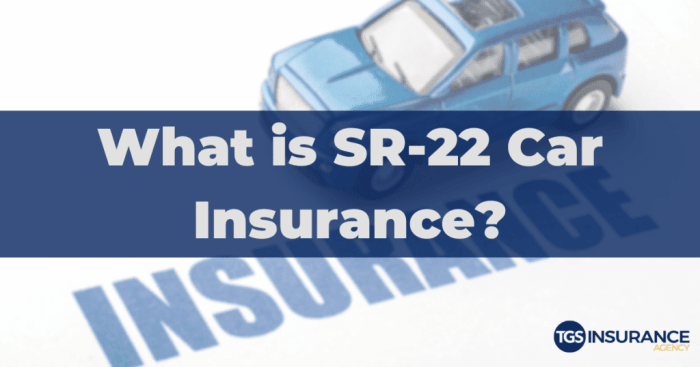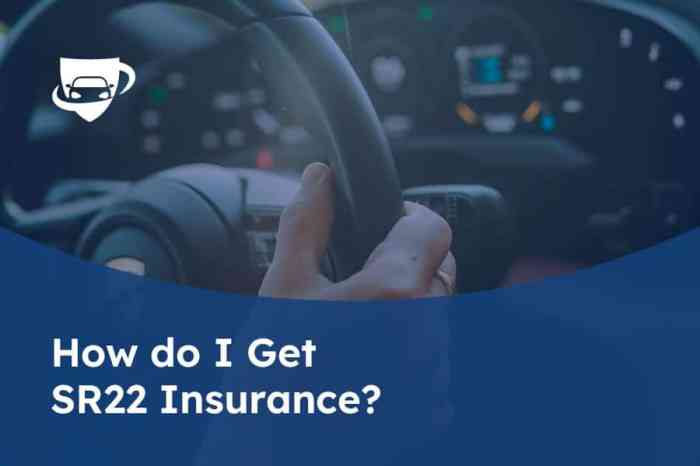Navigating the world of car insurance can be complex, and the term “SR-22” often adds a layer of confusion. This guide demystifies SR-22 insurance, explaining its purpose, requirements, and implications for your driving privileges and insurance costs. We’ll explore the process of obtaining and maintaining SR-22 coverage, offering practical advice and addressing common misconceptions along the way.
From understanding the situations that necessitate SR-22 insurance to finding affordable options and navigating the renewal process, we aim to provide a clear and concise resource for anyone facing this specific insurance requirement. We’ll also delve into the long-term impact on your driving record and insurance premiums, equipping you with the knowledge to make informed decisions.
Duration and Renewal of SR-22 Coverage

An SR-22 certificate is not insurance itself; it’s proof to the state that you carry the minimum required liability insurance. The duration of your SR-22 requirement depends entirely on the reason it was mandated and the specifics of your state’s laws. It’s crucial to understand this timeframe to avoid penalties.
The typical duration of an SR-22 requirement varies from state to state and is usually tied to the length of your driving suspension or the severity of your driving offense. It can range from one to three years, or even longer in some cases. For example, a first-time DUI might necessitate an SR-22 for three years, while a more serious offense could extend that period. Always check with your state’s Department of Motor Vehicles (DMV) for precise details.
SR-22 Renewal Process
Renewing your SR-22 insurance involves several steps, all of which are vital to maintaining compliance. Failure to renew can lead to serious consequences, including license suspension or revocation. Prompt action is key.
- Contact your insurance provider well in advance of your SR-22’s expiration date. Most companies will send you a reminder, but proactive contact ensures a smooth renewal.
- Confirm your coverage remains sufficient. Your insurance policy must continue to meet the minimum liability requirements specified by your state’s DMV.
- Pay your insurance premiums on time. Non-payment can lead to policy cancellation and, consequently, the lapse of your SR-22 certificate.
- Receive confirmation of your renewed SR-22 filing. Your insurance company will file the renewal with the DMV; obtain written confirmation to ensure the process is complete.
Consequences of Failing to Maintain SR-22 Coverage
The repercussions of not maintaining your SR-22 coverage are significant and can severely impact your driving privileges and financial stability. These consequences are not to be taken lightly.
- License Suspension or Revocation: This is the most immediate and impactful consequence. You may lose your driving privileges until the SR-22 requirement is fulfilled.
- Fines and Penalties: States often impose substantial fines for failing to maintain SR-22 coverage, adding to the financial burden.
- Increased Insurance Premiums: Even after reinstating your SR-22, your insurance rates are likely to remain elevated for an extended period.
- Difficulty Obtaining Future Insurance: A lapse in SR-22 coverage can make it challenging to obtain car insurance in the future, as insurers view it as a significant risk factor.
Concluding Remarks

Securing and maintaining SR-22 insurance may present initial challenges, but understanding the process and proactively managing your coverage can significantly mitigate potential difficulties. By carefully reviewing your options, comparing providers, and adhering to the requirements, you can navigate this aspect of car insurance effectively and maintain your driving privileges. Remember to always seek clarification from your insurance provider if any questions arise regarding your specific situation.
FAQs
What happens if I let my SR-22 coverage lapse?
Your driving privileges will likely be suspended or revoked. The DMV will be notified, and you may face further penalties.
Can I get SR-22 insurance if I have multiple violations?
Yes, but it will likely be more expensive. The cost depends on the severity and number of violations.
How long will I need to carry SR-22 insurance?
The duration varies depending on your state and the reason for the requirement. It’s typically a period of one to three years.
Will having an SR-22 affect my ability to get a loan?
Potentially. Lenders may view it as a higher risk and adjust terms accordingly, or even deny the loan.
Does my SR-22 affect my insurance rates beyond the required period?
Yes, your rates will likely remain higher than average for several years even after the SR-22 requirement is fulfilled, due to your driving history.